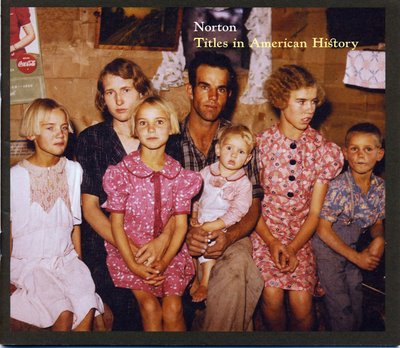Monday, May 08, 2006
Imaginary Cartography, II

Jack Whinery and his family, homesteaders, Pie Town, New Mexico. September 1940; Library of Congress, FSA-OWI Collection.
The striking and moving image serves as the cover to a book catalogue compiled by W.W. Norton; it has stayed with me since I first saw it a few weeks ago. Though I'm familiar with Walker Evans' riveting photographs of southern sharecroppers and resettled farmers from this period, I'd never before seen an image from this milieu produced in color.
In a metaphorical sense, a photograph of this type can capture and chart familial and social connections, providing a kind of map of this terrain for the viewer. (Will we ever know the first name of Mrs. Jack Whinery, for example?)
Images like this can also evoke emotion by revealing the human dignity retained by non-elite individuals ensnared within economic or social systems geared to strip that very dignity from them.
Comments:
<< Home
This is very, very cool. It's interesting how this image feels accessible. I can almost imagine having grown playing with those kids, with a slight change for fashion. Walker Evan's photographs are stunning, but I don't get the same feeling of their being real, if that makes sense.
It's probably just color v. b&w :)
It's probably just color v. b&w :)
Yeah, I agree, Nida. The color provides a sense of depth to the room, and "fills out" the people, if that makes sense.
That the picture captures the kids while they're moving (leaning to the side, looking away, pursing their lips, just having talked[?]) adds to the sense of real-ness, too.
That the picture captures the kids while they're moving (leaning to the side, looking away, pursing their lips, just having talked[?]) adds to the sense of real-ness, too.
Have you seen those Russian color photographs from the early 1900s? They were made by taking three B&W exposures with red, blue, and green filters.
http://www.loc.gov/exhibits/empire/work.html
Post a Comment
http://www.loc.gov/exhibits/empire/work.html
<< Home


